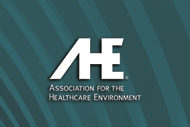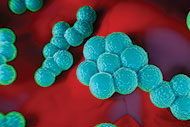Environmental services (ES) professionals play a critical and unique role in maintaining a clean, safe and sanitary environment of care. The environment has been recognized as a contributor to the transmission of health care-associated infections (HAIs). Given this scientific revelation, the role of the ES professional and technician in protecting the patient and health care team has never been more important.
The overall health care delivery system continues to evolve and change in this era of accountable care and transparency. However, the environment of care remains a risk for both the patient and health care workers throughout the entire delivery system.
The ES technician is an integral part of the patient care team and works collaboratively with other members to ensure that a safe and sanitary environment is maintained for the patient. This collaborative effort assists the health care facility in ensuring compliance with all applicable regulatory and accreditation requirements and also evidence-based clinical guidelines.
The Institute for Healthcare Improvement has created the Triple Aim, which is the cornerstone for health care reform and quality improvement. This initiative seeks to improve the health of a defined population, improve the experience of care for the patient, and also to reduce the per capita cost for health care delivery.
The Centers for Medicare & Medicaid Services has utilized this concept as the basis for health care payment reform. ES professionals have daily interactions with patients and visitors in all types of health care and can have a direct impact on patient satisfaction scores and quality indicators. This unique interaction empowers the team to have a positive impact on the patient’s experience and reduce the cost of care delivery by mitigating risk from HAIs and other dangerous pathogens.
Because ES owns the responsibility for the health care environment, the front-line technician can serve as both a patient advocate and agent of safety culture. During their daily responsibilities, these professionals are afforded the opportunity to interact with patients and their families and educate them about the many preventive steps being taken to mitigate risk.
ES leadership must work cross-functionally across the entire health care delivery system. It also is critical to maintain active involvement in professional associations such as AHE. Maintaining industry knowledge about evidence-based practices and emergent issues is an invaluable component of ongoing professional development and continuing education.
J. Hudson Garrett Jr., Ph.D, CHESP, is vice president of clinical affairs for PDI Inc., Orangeburg, N.Y. He serves as industry liaison for the AHE board of directors and is a regular speaker at the AHE Exchange annual conference.
Valuable resources available
AHE represents, defines and advances the professionals responsible for care of the health care environment to ensure high-quality outcomes and healthy communities. Following are a few of the resources that AHE offers.
• Recommended Practice Series: Environmental Services Equipment and Supplies. The equipment and supplies covered in this booklet are essential, discrete components of safe, efficient and productive environmental services (ES) operations. For more information, go to www.ahe.org/ahe/learn/tools_and_resources/publications.shtml.
• Practice Guidance for Healthcare Environmental Cleaning, second edition. This manual provides evidence-based research, guidance and recommended practices that should be considered for inclusion in health care ES departments. Because each health care facility has its own needs, this resource has been designed to enhance an existing program. To access it, log on to www.ahe.org/ahe/learn/tools_and_resources/publications.shtml.
• AHE Environmental Sustainability Certificate Program. AHE has launched a new certificate program to acknowledge the ongoing and outstanding environmental and ecological sustainability efforts of ES departments. For more program information, go to www.ahe.org/ahe/lead/environmental_sustainability_certificate_program.shtml.




